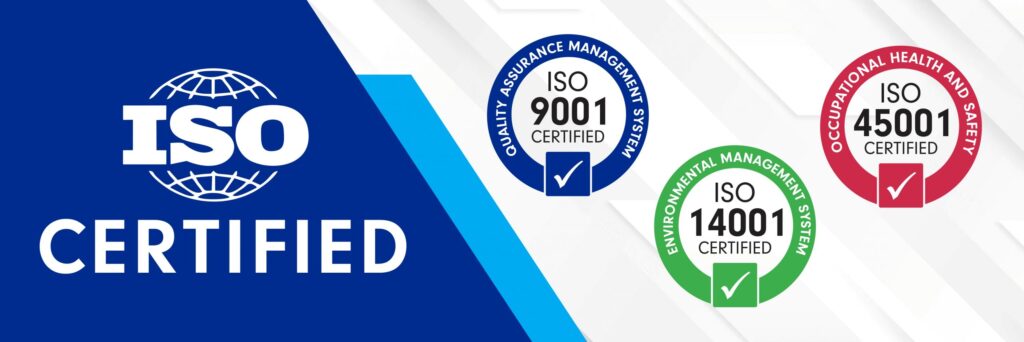ISO Certificate Download
The Definitive Guide to ISO Certificate Download: Process, Importance, and Best Practices
Introduction
In the ever-evolving landscape of business standards and quality management, obtaining an ISO certification is a significant achievement. This guide aims to provide a comprehensive understanding of the ISO certificate download process, highlighting its importance, and offering best practices for businesses seeking this prestigious recognition.

Understanding ISO Certification
The International Organization for Standardization (ISO) develops and publishes international standards to ensure the quality, safety, and efficiency of products, services, and systems. ISO certification, therefore, serves as a testament to a business’s commitment to meeting these global standards.
Significance of ISO Certification
- Global Recognition: ISO certification is globally recognized, enhancing a company’s credibility and competitiveness in the international market.
- Quality Assurance: Demonstrates a commitment to delivering products and services of the highest quality, meeting customer expectations.
- Process Optimization: Encourages businesses to streamline and improve their processes, leading to increased efficiency and reduced costs.
- Market Access: ISO certification may be a requirement for entering certain markets or industries, broadening business opportunities.
Importance of ISO Certificate Download
- Official Recognition: The ISO certificate is an official recognition of a company’s compliance with international standards, and downloading it signifies formal acknowledgment.
- Documentation for Audits: The downloaded ISO certificate serves as crucial documentation during audits, showcasing the company’s adherence to quality management standards.
- Marketing and Communication: Businesses often use the ISO certification in marketing and communication materials to build trust with customers and stakeholders.
- Employee Motivation: Displaying the ISO certificate in the workplace can motivate employees by highlighting their contribution to maintaining high-quality standards.
ISO Certificate Download Process
- Selecting the Certification Body:
- Process: Choose a reputable certification body accredited by the ISO. Common accreditation bodies include ANSI-ASQ, UKAS, and NABCB.
- ISO Certification Audit:
- Process: Undergo a thorough audit conducted by the chosen certification body to assess compliance with ISO standards.
- Issuance of ISO Certificate:
- Process: Upon successful completion of the audit, the certification body issues the ISO certificate.
- Providing Certificate Information:
- Process: The certification body provides details on how to access and download the ISO certificate.
- Accessing the Certification Portal:
- Process: Log in to the certification body’s online portal using the provided credentials.
- Locating the ISO Certificate:
- Process: Navigate through the portal to find the section dedicated to ISO certification, where the certificate download option is available.
- Downloading the Certificate:
- Process: Click on the download option and save the ISO certificate in a secure location.
Best Practices for ISO Certificate Download
- Secure Storage:
- Recommendation: Save the downloaded ISO certificate in a secure and easily accessible location.
- Action: Create a dedicated folder with restricted access to ensure the security of the certificate.
- Regular Backups:
- Recommendation: Regularly back up the ISO certificate.
- Action: Implement a backup routine to prevent loss of the certificate due to unforeseen events.
- Access Control:
- Recommendation: Control access to the certificate download portal.
- Action: Limit access to individuals responsible for managing and utilizing the ISO certification.
- Communication with Stakeholders:
- Recommendation: Communicate the ISO certification achievement.
- Action: Share the news with employees, customers, and stakeholders to build trust and showcase commitment to quality.
- Integrate with Quality Management Systems:
- Recommendation: Integrate the ISO certificate information with existing Quality Management Systems (QMS).
- Action: Ensure seamless coordination between the ISO certification and QMS for comprehensive quality control.
- Stay Informed on Certification Updates:
- Recommendation: Stay informed about certification updates and renewals.
- Action: Regularly check for updates from the certification body and renew the ISO certification as required.
- Utilize the Certification Mark:
- Recommendation: Use the ISO certification mark in marketing materials.
- Action: Leverage the ISO mark to enhance brand reputation and communicate a commitment to quality.
Challenges in ISO Certificate Download
- Technical Issues:
- Challenge: Technical difficulties in accessing or downloading the certificate.
- Solution: Communicate promptly with the certification body’s support team to resolve any technical issues.
- Data Security Concerns:
- Challenge: Concerns about the security of online portals.
- Solution: Ensure the certification body follows robust security measures and use secure connections for downloads.
- Document Loss or Damage:
- Challenge: Risk of losing or damaging the downloaded certificate.
- Solution: Implement a backup strategy and store physical copies in a secure location.
Conclusion
The ISO certificate download process is a pivotal step in solidifying a company’s commitment to international quality standards. This guide has provided a comprehensive overview of the significance of ISO certification, the importance of downloading the certificate, and best practices for a smooth process. By following these guidelines, businesses can not only achieve ISO certification but also effectively leverage it for enhanced credibility, market access, and continuous improvement in quality management. ISO certification is not just a badge; it’s a testament to a company’s dedication to delivering excellence in every aspect of its operations.